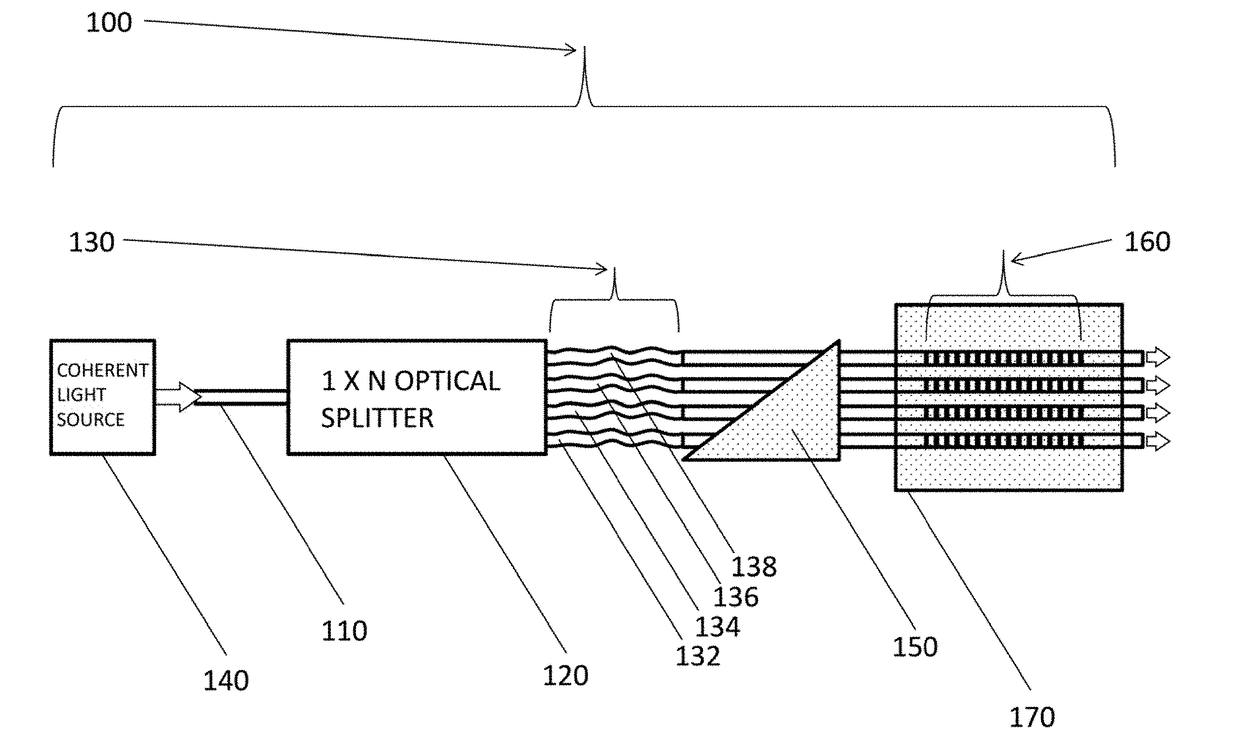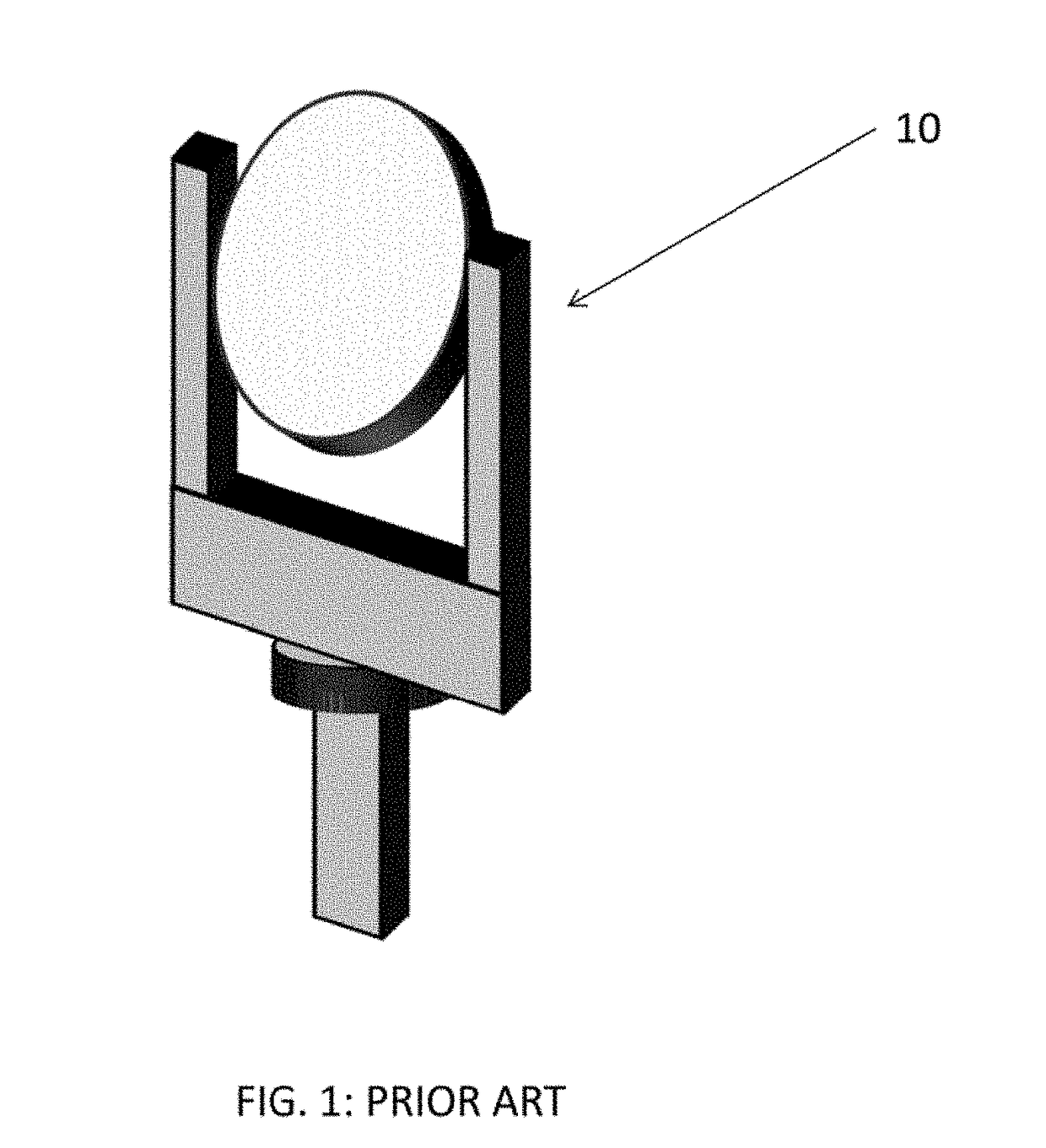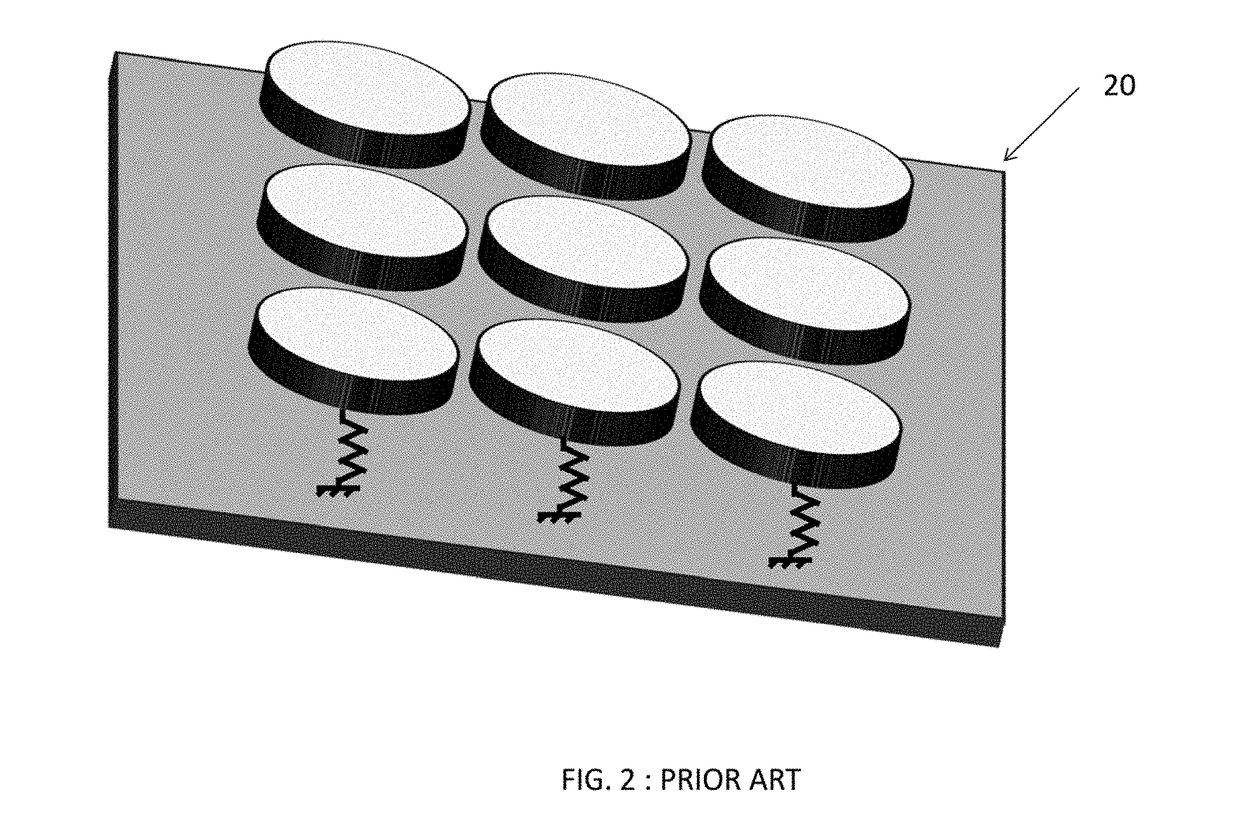Chip-scale two-dimensional optical phased array with simplified controls
a phased array and chip-scale technology, applied in the field of optical phased arrays, can solve the problems of large swap, inconvenient operation, and large power requirements, and achieve the effects of reducing power requirements, compact size, and minimal weigh
- Summary
- Abstract
- Description
- Claims
- Application Information
AI Technical Summary
Benefits of technology
Problems solved by technology
Method used
Image
Examples
Embodiment Construction
[0034]An embodiment of the invention includes a device 100, as shown by way of example in FIGS. 4 and 5. The device includes an input waveguide 110 operably connected to a 1×N optical splitter 120, which comprises a single splitter input and a plurality of splitter outputs (i.e., N splitter outputs). The plurality of splitter outputs is out of phase and includes a non-uniform phase front. The device 100 includes a one-dimensional phase compensation array 130 communicating with the optical splitter 120. The phase compensation array 130 includes a plurality of N serpentine optical waveguides. (For the purpose of this patent application, the terms serpentine waveguides and S-bend waveguides are equivalent). FIGS. 4 and 5 only shows four serpentine optical waveguides 132, 134, 136, 138 for ease of understanding. However, one of ordinary skill in the art will readily appreciate that the phase compensation array 130 includes as many serpentine optical waveguides as optical splitter 120 ha...
PUM
 Login to View More
Login to View More Abstract
Description
Claims
Application Information
 Login to View More
Login to View More - R&D
- Intellectual Property
- Life Sciences
- Materials
- Tech Scout
- Unparalleled Data Quality
- Higher Quality Content
- 60% Fewer Hallucinations
Browse by: Latest US Patents, China's latest patents, Technical Efficacy Thesaurus, Application Domain, Technology Topic, Popular Technical Reports.
© 2025 PatSnap. All rights reserved.Legal|Privacy policy|Modern Slavery Act Transparency Statement|Sitemap|About US| Contact US: help@patsnap.com



